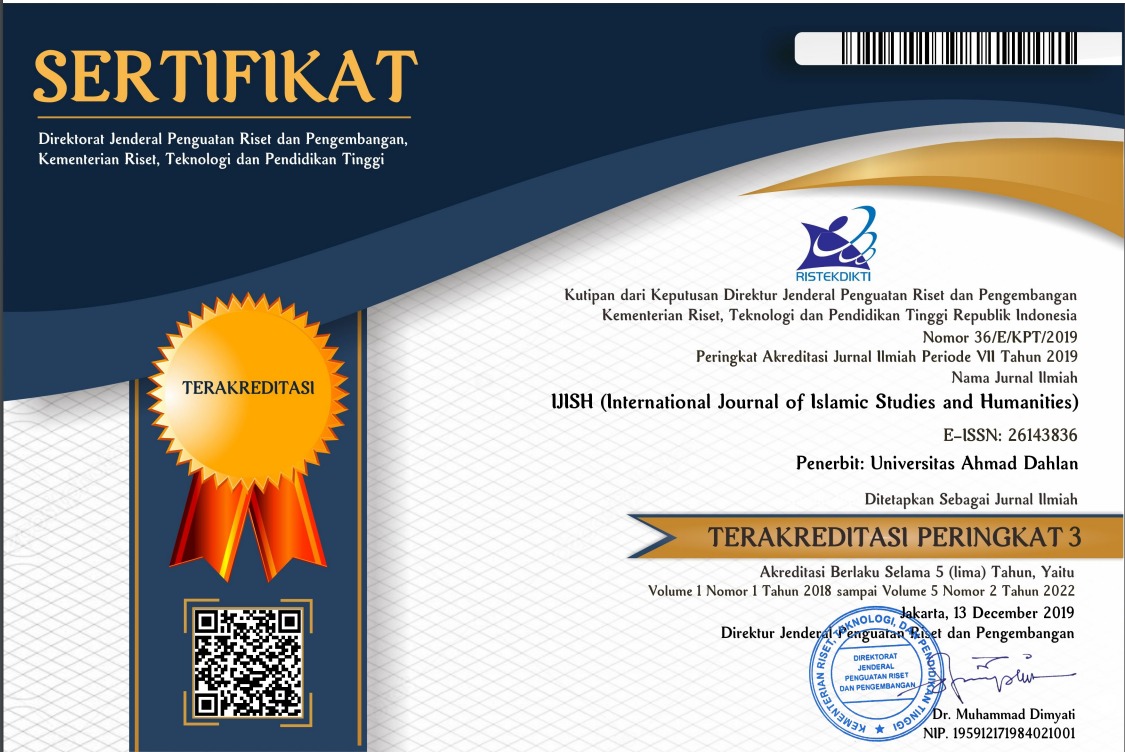Mapping Contemporary Islamic Jurisprudence of Muḥammad Saʻīd al-‘AshmÄwÄ« and Muḥammad ShaḥrÅ«r
DOI:
https://doi.org/10.26555/ijish.v1i1.132Keywords:
Al-‘AshmÄwÄ«, ShaḥrÅ«r, Islamic jurisprudence, ḥudÅ«d theoryAbstract
Muḥammad Saʻīd Al-‘AshmÄwÄ« and Muḥammad ShaḥrÅ«r are well known as contemporary Muslim thinkers. This article tries to map their contemporary ideas on Islamic jurisprudence. The main data of this research taken mainly from the works both of Al-‘AshmÄwÄ« and ShaḥrÅ«r. In particular, the paper tries to analyze Al-‘AshmÄwī‘s ideas on sharia, politics, hijab, marriage and divorce. On the other hand, the ideas of Shahrour on al-Qur'an, Sunnah and Fiqh, the theory of borders, pluralism, the commandment, inheritance, hijab, marriage, divorce, dowry, politics, and imamate are also critizised. After analyzing their lives and their ideas on Islamic jurisprudence, the paper found that their social, educational and practical backgrounds have affected their intellectual formations and ideas. Ashmawi is encouraged by diligence and enlightenment and is believed to be enlightened. Shahrour, however, takes a new approach in order to create the ḥudÅ«d theory as a new way. As well as their intellectual background, Ashmawi has a good queen in Arabic, English and French as well as religion, Sharia, jurisprudence and theology. Shahrour is a good queen in Arabic, English, Russian, philosophy, philology and historical language.Downloads
Published
2018-04-07
How to Cite
Yusroh, Y., & Abd. Rahman, M. Z. (2018). Mapping Contemporary Islamic Jurisprudence of Muḥammad Saʻīd al-‘AshmÄwÄ« and Muḥammad ShaḥrÅ«r. IJISH (International Journal of Islamic Studies and Humanities), 1(1), 32–46. https://doi.org/10.26555/ijish.v1i1.132
Issue
Section
Articles
License
Authors who publish with IJISH (International Journal of Islamic Studies and Humanities) agree to the following terms:
- Authors retain copyright and grant the journal right of first publication with the work simultaneously licensed under a Creative Commons Attribution License (CC BY-SA 4.0) that allows others to share the work with an acknowledgment of the work's authorship and initial publication in this journal.Â
- Authors are able to enter into separate, additional contractual arrangements for the non-exclusive distribution of the journal's published version of the work (e.g., post it to an institutional repository or publish it in a book), with an acknowledgment of its initial publication in this journal.
- Authors are permitted and encouraged to post their work online (e.g., in institutional repositories or on their website) prior to and during the submission process, as it can lead to productive exchanges, as well as earlier and greater citation of published work.

This work is licensed under a Creative Commons Attribution-ShareAlike 4.0 International License.






